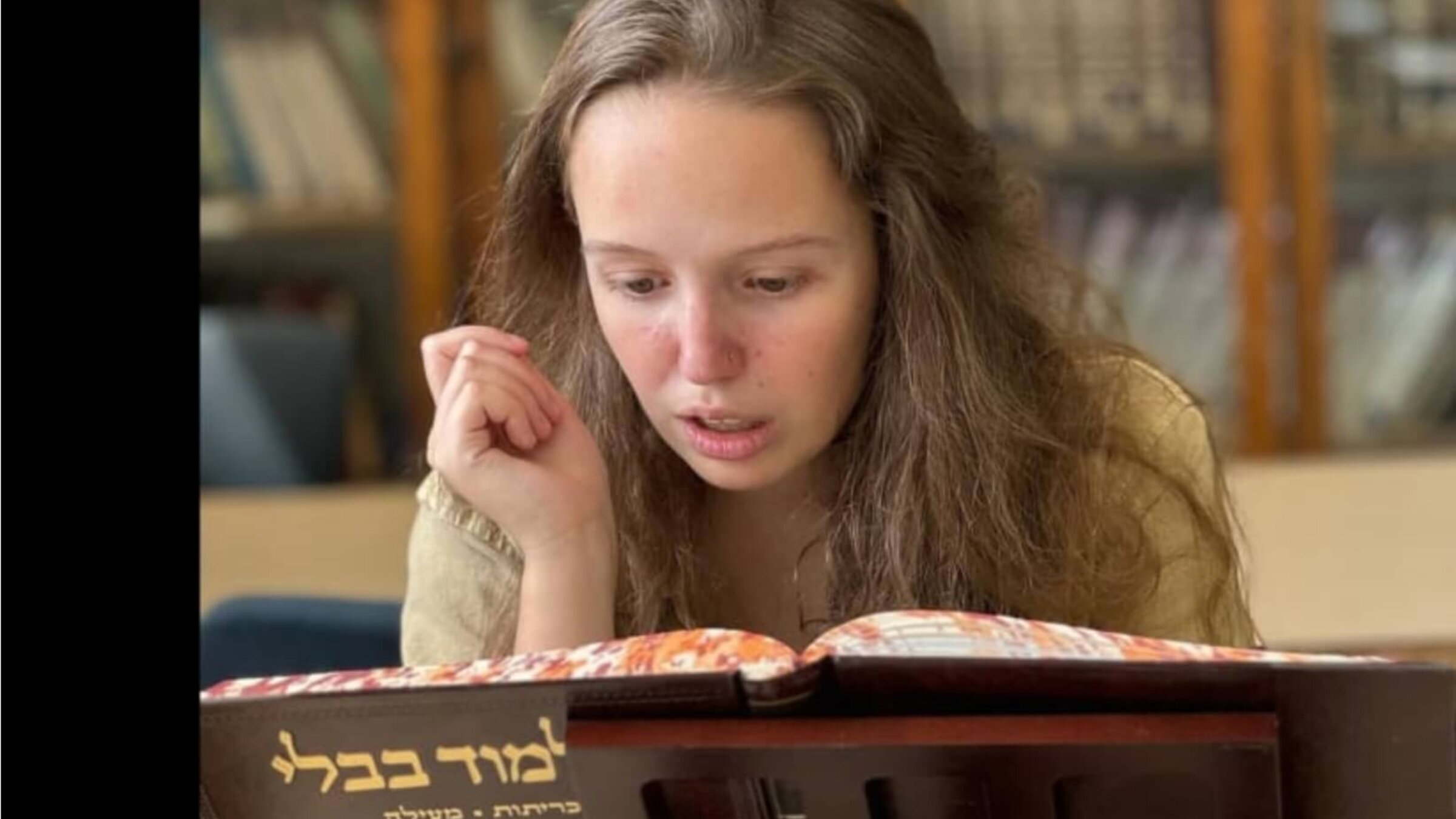טשיקאַוועסן: 18־יאָריק מיידל פֿאַרענדיקט ש״ס אין צוויי מיט אַ האַלב יאָרTidbits: 18-year old girl completes learning Talmud in 2-½ years
געוויינטלעך לערנען גמרא בלויז מאַנסבילן און בחורים.

עלקע בענטלי Courtesy of Elke Bentley
Tidbits is a weekly feature of easy news briefs in Yiddish that you can listen to or read, or both! If you read the articles and don’t know a word, just click on it and the translation appears. You’ll also find the link to the article in English after each news brief. Listen to the report here:
עלקע בענטלי, אַן 18־יאָריק מיידל אין ברוקלײַן, מאַסאַטשוסעטס, האָט לעצטנס איבערגעלייענט גאַנץ ש״ס, די גאַנצע גמרא, אין בלויז צוויי מיט אַ האַלב יאָר.
די גמרא באַשטייט פֿון מער ווי 2,700 זײַטן אויף לשון־קודש (אַלט־העברעיִש און אַראַמעיִש), באַגלייט פֿון פּירושים און פֿוסנאָטעס.
געוויינטלעך לערנען נאָר מאַנסבילן און בחורים גמרא. ס׳רובֿ פֿון זיי טוען עס ווי אַ טייל פֿון דער טראַדיציע „דף יומי“ (לערנען אַ בלאַט אַ טאָג), וואָס דויערט אַרום זיבן מיט אַ האַלב יאָר צו פֿאַרענדיקן.
„ווען איך וואָלט געווען אַ ייִנגל, וואָלט איך מסתּמא דאָס נישט פֿאַרענדיקט אַזוי גיך ווײַל איך וואָלט אַ סך טיפֿער געלערנט דעם אינהאַלט,“ האָט עלקע געזאָגט.
אָבער לייענען בלויז דעם טעקסט, אָן די פּירושים, האָט געוויסע מעלות, האָט דערקלערט רבנית לאה סאַרנאַ, די דירעקטאָרין פֿונעם ניו־יאָרקער לערן־אינסטיטוט „דרישה“. „ווען מע לייענט גאַנץ ש״ס אַזוי גיך, בײַ אַ יונגן עלטער, באַקומט מען אַן אמת געפֿיל פֿון איר פֿאַרשידנאַרטיקייט. דערנאָך איז וויכטיק אָנצוהייבן פֿון ס׳נײַ, און דאָס מאָל — פּאַמעלעכער, מיט אַלע פּירושים, און דעמאָלט האָט מען שוין צײַט צו פֿרעגן שאלות אויך.“
במשך פֿון דער געשיכטע האָבן ס׳רובֿ רבנים אָפּגעמוטיקט פֿרויען פֿון לערנען גמרא, בפֿרט אין דער פֿרומער וועלט. אין די הײַנטיקע מאָדערנע אָרטאָדאָקסישע טאָגשולן אָבער לערנט מען יאָ גמרא צו ייִנגלעך און מיידלעך גלײַך. בענטליס טאַטע־מאַמע, וואָס היטן שבת און כּשרות, האָבן תּמיד געשטיצט איר אינטערעס אין לערנען תּלמוד.
צו לייענען מער וועגן דעם אויף ענגליש, גיט אַ קוועטש דאָ.
To read more about this in English, click here.
















